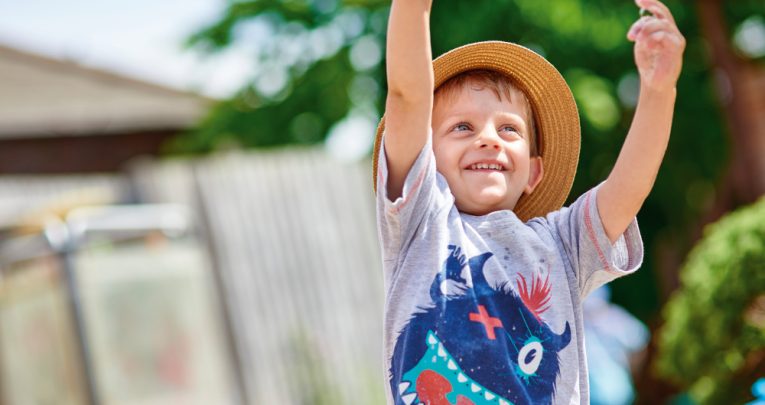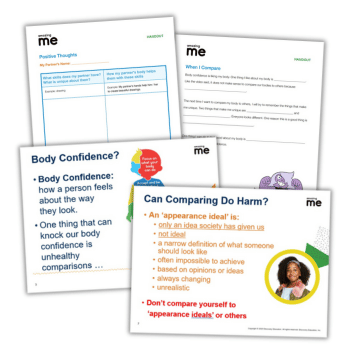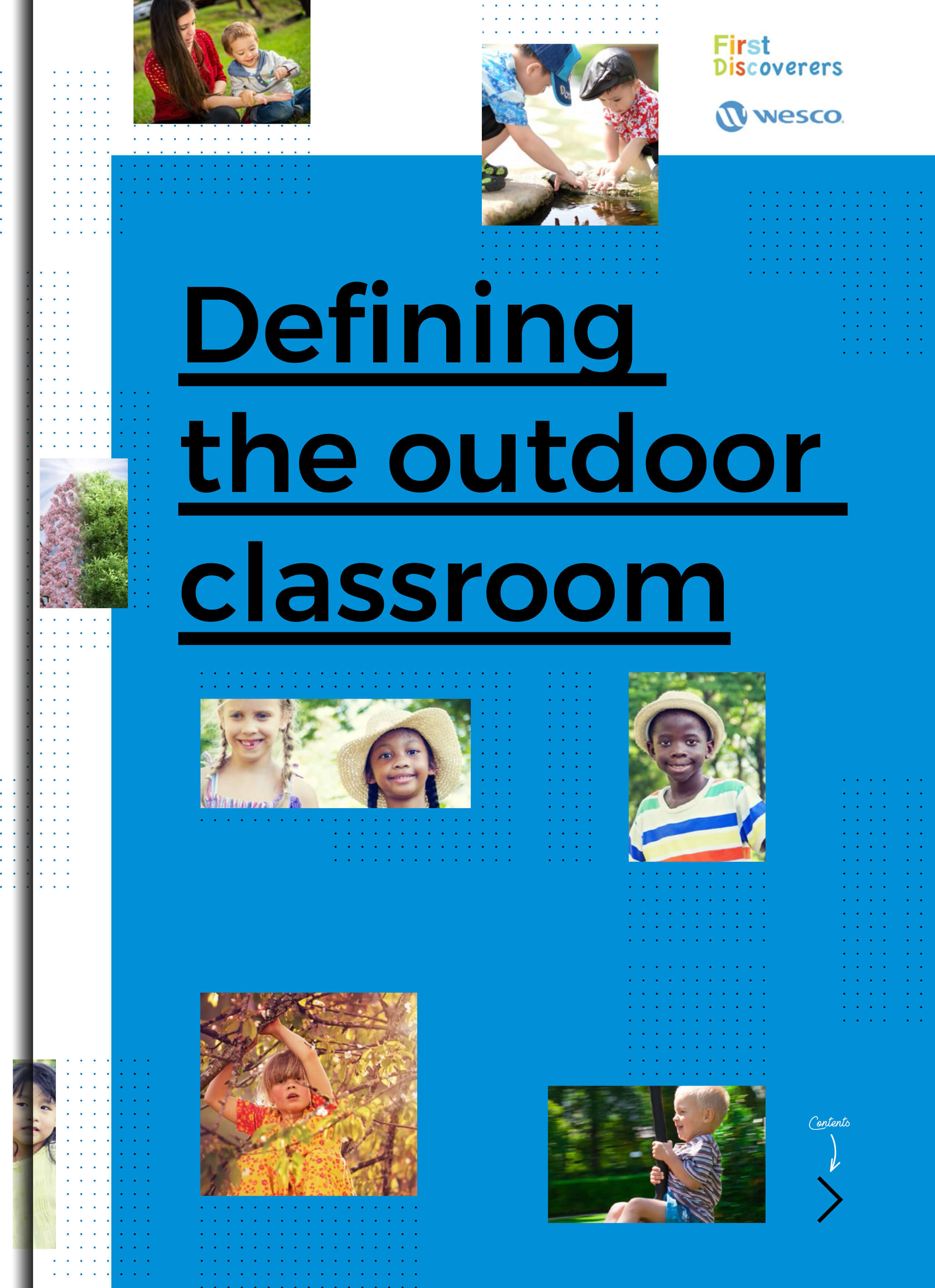Should you Take More Risks in Early Years?

Adventurous play nurtures successful learners, but how can our practitioners strike the balance between hands-off supervision and keeping children safe?

As all parents and those delivering early years care will know, younger children are naturally wired to flourish via endless cycles of ‘risk – grow – repeat’ activity.
As Helen Tovey (2011) reminds us, “Babies would never learn to crawl, negotiate steps, stand up, or children learn to run, ride a bike and so on without being prepared to take a risk, to tumble and to learn from the consequences. Learning to navigate space, people and objects requires risk and a willingness to try things, have a go and make mistakes.”
One particular aspect of this play world of discovery is the high-octane exposure to challenge and adventure which is termed ilynx or ‘dizzy play’ – and which, for many, continues into adult life.
A Greek word, ilynx literally translates as ‘whirling water’ and relates to the swirling sensory rush young children are drawn to enjoy and constantly explore through activities such as being tossed in the air, balancing precariously, and many others where the boundaries between joy and fear, success and failure, risk and reward are blurred – or even temporarily suspended – pending a safe outcome and a heightened sense of satisfaction, well-being and self-worth.
Leading psychologist Carol Dweck has described this early childhood behaviour as building the core components of a ‘mastery disposition’ which will support a lifetime of learning.
If this facility is not allowed to develop, Dweck believes, it is soon replaced by an acquired “helplessness”.
This, she claims, is often made far worse by the persistent communication of parental anxieties.
Rather than pursuing the impossible goal of absolute safety, Dweck argues that enjoyable challenge is by far the best response because, as she explains, “It doesn’t help a child to tackle a difficult task if they succeed constantly on an easy one. It doesn’t teach them to persist in the face of obstacles, if obstacles are always eliminated.” (2000)
Risk and safety in practice
The legal doctrine of ‘in loco parentis’ (ie behaving like a responsible parent) is often taken by childcare workers to mean they must attempt to make every outdoor environment and play experience 100% safe.
Whilst it could be reckless to suggest they should be unsafe, the crux of the matter is: what is expected of professionals is that they understand the dangers and have properly assessed and adjusted the balance between challenge and benefits.
This entirely fulfils their ‘duty of care’ – which simply means acting in the same responsible manner as any reasonable adult would.
To rule out age-appropriate challenge is effectively to deny children opportunities to develop and become ‘risk-wise’. Many therefore believe such actions could be deemed to act against a child’s best interests, and thus could constitute a direct breach of the duty of care.
As Kathryn Solly (2015) points out, “Offering opportunities for risk, challenge and adventure which have been suitably risk assessed and considered as purposeful by the setting is far safer than children seeking out those not designed for them in places which are far from ideal and may lead to serious harm.”
Support your practitioners
No matter how life-enhancing outdoor experience may be, the quality of adult participation is absolutely critical to successful outcomes, with Alison Stephenson (2003), for example, making it clear that “despite the importance of a challenging environment, children’s hunger for physical challenge was satisfied more through the practitioners’ attitudes than the provision itself”.
But considering the issue from the perspective of childcare professionals, Ellen Beate Hansen Sandseter (2011) emphasises that “finding the balance between allowing children to explore and take risks in their play while also avoiding serious injuries is not an easy exercise”.
For those managing childcare settings, the implications are clear: not only must children be supervised by enthusiastic and experienced practitioners, staff in turn must also receive unequivocal gold-standard encouragement, assistance and approval. Helen Tovey (2010) explains just how much this can influence the provision:
“[W]here practitioners felt supported within their teams and understood the benefits of risk-taking, they were confident to offer experiences which included some element of risk and challenge. Where practitioners felt unsupported by senior staff and anxious about blame and possible litigation, they were less likely to make provision for adventurous play.”
The professional risks for practitioners are real and must be fully addressed to unlock the potential enhancements they alone can contribute by their wholehearted commitment to challenging play.
Helen Tovey (2011) has offered some practical suggestions by which this could be achieved, which are outlined in the panel at the end of this article.
Be proactive
Childcare professionals cannot afford to remain neutral where risk is concerned. Ofsted for one will expect to see this feature positively addressed and effectively put into practice.
Though many parents will, understandably, have their own perspectives and priorities, it is surely the duty of any responsible institution to provide leadership by fostering a ‘best interests’ culture.
Demonstrating to parents that there is always a 360-degree assessment of challenge and adventure, as well as highlighting the longer-term benefits, is the best way to win support for such life-enhancing initiatives which are deservedly at the very heart of playing and learning outdoors.
Five steps to making a success of risky play…
- Shared understandings concerning safety and risk allow staff to operate in an environment where expectations are made clear in a shared approach which extends well beyond procedural risk assessments
- Engaging parents is essential. They must be allowed to become partners in outdoor play initiatives rather than marginalised to be converted into critics or potential litigators
- Adopting realistically high expectations of what children can achieve is central to the success of outdoor play projects. This demands that everyone is well informed about each child’s capabilities and will thus be able to judge when, and when not, to intervene
- Children must be accepted as the natural risk-seekers and risk-takers they are. The task is to determine their intentions then support them to discover a safe means of achieving the desired outcomes
- Practitioners should develop a common language of risk and safety which safely facilitates play objectives (eg “coming down backwards could be a safer way”) and is prepared to limit or curtail a proposed venture on the rare occasions it may be necessary (eg “no, that’s dangerous because…”). Children will be encouraged to remain adventurous where they can rely upon secure and reasonable boundaries which are clearly expressed. (Tovey, 2011)
Further reading
- Self-theories: Their role in motivation, personality and development by Carol Dweck (Taylor & Francis, 2000)
- Children’s risky play in early childhood education and care by Ellen Beate Hansen Sandseter (in Childlinks, Issue 3, 2011)
- Risk, Challenge and Adventure in the Early Years by Kathryn Solly (Routledge, 2015)
- Physical risk-taking: dangerous or endangered? by Alison Stephenson (in Early Years, 23 (1))
- Playing on the edge: Perceptions of risk and danger in outdoor play by Helen Tovey (in Play and Learning in the Early Years, SAGE Publications, 2010)
- Achieving the balance: Challenge, risk and safety by Helen Tovey (in Outdoor Provision in the Early Years, SAGE Publications, 2011)
 This article is an edited extract taken from Defining the Outdoor Classroom – a free ebook produced by online early years resource First Discoverers. Visit firstdiscoverers.co.uk to download your copy.
This article is an edited extract taken from Defining the Outdoor Classroom – a free ebook produced by online early years resource First Discoverers. Visit firstdiscoverers.co.uk to download your copy.
Committed to challenge
Five steps to making a success of risky play…
- Shared understandings concerning safety and risk allow staff to operate in an environment where expectations are made clear in a shared approach which extends well beyond procedural risk assessments
- Engaging parents is essential. They must be allowed to become partners in outdoor play initiatives rather than marginalised to be converted into critics or potential litigators
- Adopting realistically high expectations of what children can achieve is central to the success of outdoor play projects. This demands that everyone is well informed about each child’s capabilities and will thus be able to judge when, and when not, to intervene
- Children must be accepted as the natural risk-seekers and risk-takers they are. The task is to determine their intentions then support them to discover a safe means of achieving the desired outcomes
- Practitioners should develop a common language of risk and safety which safely facilitates play objectives (eg “coming down backwards could be a safer way”) and is prepared to limit or curtail a proposed venture on the rare occasions it may be necessary (eg “no, that’s dangerous because…”). Children will be encouraged to remain adventurous where they can rely upon secure and reasonable boundaries which are clearly expressed. (Tovey, 2011)
Further reading
- Self-theories: Their role in motivation, personality and development by Carol Dweck (Taylor & Francis, 2000)
- Children’s risky play in early childhood education and care by Ellen Beate Hansen Sandseter (in Childlinks, Issue 3, 2011)
- Risk, Challenge and Adventure in the Early Years by Kathryn Solly (Routledge, 2015)
- Physical risk-taking: dangerous or endangered? by Alison Stephenson (in Early Years, 23 (1))
- Playing on the edge: Perceptions of risk and danger in outdoor play by Helen Tovey (in Play and Learning in the Early Years, SAGE Publications, 2010)
- Achieving the balance: Challenge, risk and safety by Helen Tovey (in Outdoor Provision in the Early Years, SAGE Publications, 2011)
Browse resources for Child Safety Week.











